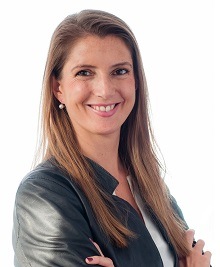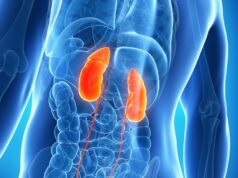
Physicians at Stanford Medicine (Stanford, USA) have developed a way to provide paediatric kidney transplants without immunosuppressant drugs. Their key innovation, according to a Stanford press release, is a safe method to transplant the donor’s immune system to the patient before surgeons implant the kidney.
The medical team has named the two-transplant combination a dual immune/solid-organ transplant (DISOT). A scientific paper describing the first three DISOT cases, all performed at Lucile Packard Children’s Hospital Stanford, was recently published online in the New England Journal of Medicine (NEJM).
This innovation removes the possibility that the recipient will experience immune rejection of their transplanted organ, the release details, adding that the new procedure also rids recipients of the substantial side-effects of a lifetime of immunosuppressant medications, including increased risks for cancer, diabetes, infections and high blood pressure.
The first three DISOT patients were children with a rare immune disease, but the team is now expanding the types of patients who could benefit, and their protocol received US Food and Drug Administration (FDA) approval on 27 May 2022 for treating patients with a variety of conditions that affect the kidneys.
“Safely freeing patients from lifelong immunosuppression after a kidney transplant is possible,” said the report’s lead author, Alice Bertaina (Stanford University School of Medicine, Stanford, USA). Bertaina anticipates that the protocol will eventually be available to many people needing kidney transplants, starting with children and young adults, and later expanding to older adults. The researchers also plan to investigate DISOT’s utility for other types of solid-organ transplants.
The scientific innovation from Bertaina’s team has another important benefit: enabling safe transplantation between a donor and recipient whose immune systems are genetically half-matched, meaning children can receive stem cell and kidney donations from a parent.
New methods
Researchers working with adult patients, including a team at Stanford, have performed sequential stem cell and kidney transplants from living donors in the past. When the donor was half-matched, they had partial success, the release notes, but patients were either unable to completely discontinue immunosuppressant drugs after transplant or, in some cases, had unacceptably high risks of severe graft-versus-host disease (GVHD).
The Stanford paediatric team introduced refinements that greatly improve the success of the two-transplant combination with much lower risk. Central to this is a change in how the donor’s stem cells are processed after having been removed from their body, with technicians performing alpha-beta T cell depletion to remove the type of immune cells that cause GVHD.
Bertaina’s team had showed that alpha-beta T cell depletion (which she developed while working in Italy previously) makes stem cell transplants safer and enables genetically half-matched transplants. According to the Stanford press release, the protocol is relatively gentle, making it safe for children with immune disorders who are too medically fragile for a traditional stem cell transplant. And, alpha-beta T cells recover in the patient after 60-to-90 days, meaning they regain full immune function.
When Stanford physicians began caring for a handful of children with a rare immune disease called Schimke immuno-osseous dysplasia (SIOD), they realised they could meet the patients’ medical needs with a multistep approach. “SIOD includes chronic kidney disease, which ultimately requires kidney transplantation,” Bertaina explained. SIOD also causes bone marrow failure, meaning patients need a stem cell transplant to provide a new, healthy immune system. “These were unique patients in which we had to do the stem cell transplant and a kidney transplant,” Bertaina added.
Positive outcomes
Each of the three children included in the NEJM report received a stem cell transplant from one of their parents, incorporating alpha-beta T cell depletion. Between five and 10 months later, after recovering from the stem cell transplant, each child received a kidney from the same parent who had donated the stem cells.
One patient had a mild episode of GVHD, affecting the skin, which was resolved with medication. After the kidney transplantation, the physicians gave immunosuppressant medications to the first two patients for 30 days, then discontinued the drugs. The third patient experienced short-term side-effects from immunosuppression, including high blood sugar, and medication was discontinued even sooner.
All three patients no longer have the immune disorder, the release states. They have been living without the immune disease—and with new, fully functioning kidneys that their bodies have accepted—for 22 to 34 months. “They are doing everything,” said Bertaina. “They go to school, they go on vacation, they are doing sports—they are having completely normal lives.”
Now, the Stanford team is expanding the protocol to more types of patients, including children who have had an initial kidney transplant that their bodies rejected—a group that includes up to half of all paediatric kidney transplant recipients. The new FDA approval also covers several diseases causing kidney damage, including SIOD, cystinosis, systemic lupus and loss of a prior kidney transplant due to focal segmental glomerulosclerosis.
Adults whose bodies have rejected an initial kidney transplant or have an immune disease that attacks the kidneys could receive DISOT in the future, Bertaina added, and the Stanford team also plans to investigate how to adapt its approach to other solid-organ transplants, including from deceased donors. “That is a challenge, but it is not impossible,” Bertaina stated. “We will need three-to-five years of research to get that working well.”












